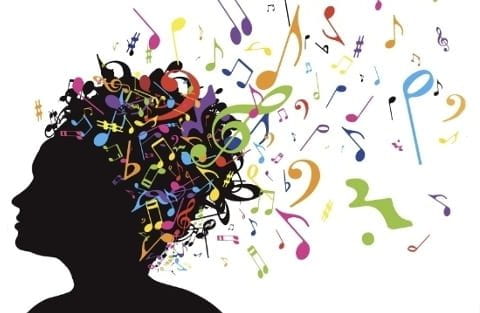Our Mini Review series in Archways does a brief dive into research topics at the intersection of the arts and health.
Research on Music Therapy
This month, Amara Anyanwu, a Research Assistant in the BMED Lab working on Project CHROMA, tells us about the emerging research on therapeutic music engagement.
Rice University’s Project CHROMA studies the effects of music creativity on brain health and well-being in older adults and individuals with mild cognitive impairment. According to the American Music Therapy Association, music therapy can be used to help decrease anxiety and stress, decrease the perception of pain, increase confidence, and improve memory making [1].

Playing musical instruments has been shown to significantly improve frontal lobe function in patients with Mild Cognitive Impairment. In Shimizu et al.’s multitask movement music therapy study, patients with Mild Cognitive Impairment were asked to create repetitive rhythms with a Naruko clapper instrument. After the task, the researchers found increased cerebral blood flow in the prefrontal cortex, indicating increased stimulation. The patients also showed improved scores on the Frontal Assessment Battery, a cognitive test for frontal lobe function [3].
Music is very much about connecting with people, connecting with the external world.
Dr. Orii McDermott
Patients with moderate or advanced dementia may not be able to clearly communicate how they feel. In The importance of music therapy for people with dementia, Dr. Orii McDermott introduces the MiDAS scale (Music in Dementia Assessment Scales). Previous research in music therapy was often qualitative. Dr. McDermott developed a way to quantitatively assess how patients with dementia engage with music, using five key scales: interest, response, initiation, involvement, and enjoyment [4]. The MiDAS scale is now used in over twelve countries by music therapists, researchers, and clinicians to improve the quality of life of patients with dementia. Dr. McDermott explains that “music is very much about connecting with people, connecting with the external world”.
In Project CHROMA, participants learn, compose, and create their own music in group music classes. Many of the instruments that the participants use are household items, so the classes are accessible and can be replicated all over the world and with individuals across socioeconomic groups. As a research assistant, I have had the opportunity to observe many of the music classes, and it is amazing to see the participants become more confident in their musical skills as the class progresses. There is always so much joy and life in the classroom. The participants support and encourage each other throughout the class, giving each other feedback and helping each other make their ideas come to life. This creative environment hopes to improve the brain health and wellbeing of our participants.
References
- [1] What is Music Therapy? American Music Therapy Association. (2005). Retrieved July 8, 2022, from https://www.musictherapy.org/about/musictherapy/
- [2] Leiden University. (2018). Music and the Brain. Universiteit Leiden. Retrieved July 8, 2022, from https://www.universiteitleiden.nl/en/news/2018/11/music-and-the-brain
- [3] Shimizu, N., Umemura, T., Matsunaga, M., & Hirai, T. (2017). Effects of movement music therapy with a percussion instrument on physical and frontal lobe function in older adults with mild cognitive impairment: A randomized controlled trial. Aging & Mental Health, 22(12), 1614–1626. https://doi.org/10.1080/13607863.2017.1379048
- [4] Regehr, K. (Host). (2019, May 6). Dr Orii McDermott: The importance of music therapy for dementia patients (No. 1) [Audio podcast episode]. In How Researchers Changed the World. Taylor & Francis. https://www.howresearchers.com/podcasts/episode-1/

